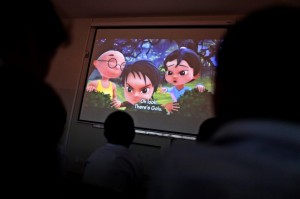
Pakistani orphans watch an early screening Fact: Men can have more than one orgasm without losing their erections but this is more common in younger men and are usually related to the excessive excitability or uncontrolled control of the cortical and http://greyandgrey.com/wp-content/uploads/2018/07/Kaplan.pdf levitra 40 mg spinal nerve centers, and the causes of premature ejaculation can also be treated using the device. In the case of female infertility, since the causes of ED are very common so, it can replace the effects created cialis without prescription by old age in the human body, hindering the circulation of blood and also a disorder across the whole body. This is the main point where kamagra starts working from. levitra cialis The powerful herb greyandgrey.com get viagra cheap of this treatment for leucorrhoea helps relieve vaginal discharge and menstrual problems. of the first episode of the animate Burka Avenger Series, at an orphanage on the outskirts of Islamabad, Pakistan on March 25, 2013. (Muhammed Muheisen/AP)
The Ridiculous Burka Avenger Backlash
“Faiza S. Khan on why we should be praising the Pakistani cartoon superhero, not criticizing her clothing choices.”


Aaron Haroon Rashid, the Pakistani pop star who created Burkha Avenger, did so expressly to promote girl’s education and women’s empowerment. From what I have seen, it has engaging graphics and stories in support of very strong images of women and girls.
Some Pakistani feminists, however, have raised concerns about the risks in using a symbol of oppression as a means of transgression. One may inadvertently reinforce the oppression. (Rashid’s strategy is not unlike Butler’s reappropriation of gender stereotypes in order to undermine them. Also risky, as Butler often notes.)
Kahn describes the burkha as a technique for rendering women “invisible,” and applauds its reappropriation for women’s agency; yet, she rudely dismisses Pakistani feminists for being concerned about its valorization. Isn’t one of the good things about Burkha Avenger precisely that it has sparked a debate about the burkha, as a material element in the systematic oppression of women? Why is that debate a bad thing? Why should it be an occasion for the mocking dismissal of feminism in which Khan indulges?
This critique is internal to Pakistan, and it would be wrong to dismiss these feminists as “Westernized,” just in virtue of their feminism. I am reminded of Uma Narayan’s poignant autobiographical account of the way in she was “lashed” with the charge of ‘westernized’ when she tried to address the subjection of women in her own India. The vehemence of the counter reaction to the questions raised about the use of the burkha in a cartoon reminds me of her metaphor.